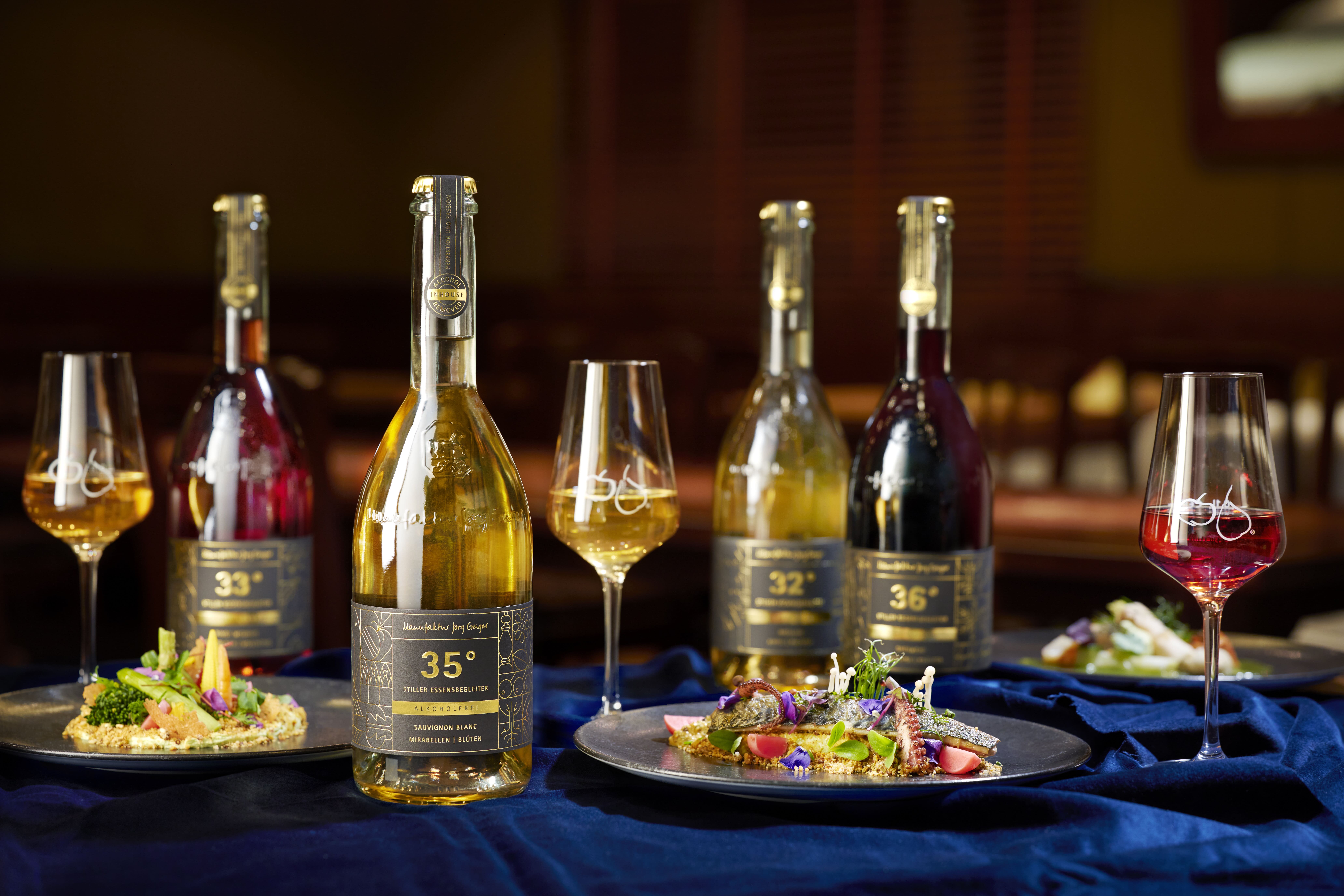31/05/2023

De-alcoholized at 32°, 33°, 35° and 36°
Low temperatures are required to remove the alcohol in order to preserve the delicate notes of the wine. This requires not only a high vacuum, but also more time. For this reason, we do not choose cheaper and faster contract processes for the complex vacuum distillation step, as is usually the case, but this step also takes place "INHOUSE".
The generous design of our system enables us to extract the alcohol with a vacuum of just 50 mbar at temperatures of 32° to a maximum of 36 °C, depending on the initial alcohol content of the wine. The wine is finely sprayed in the upper parts of the two consecutive seven-meter-high columns and then trickles down over 5000 m² of stainless steel contact surface. The gentle transfer of energy from the rising "cold steam" into the wine takes place on this contact surface. The more volatile alcohol dissolves and rises to the top, while the heavy dealcoholized wine continues to flow down and collects at the bottom of the column. The same process is repeated in a second column in order to achieve complete and gentle "cold" dealcoholization.
If you don't want to risk a "uniform taste", it is necessary to clean the inside of the entire system extensively before switching to a new wine, as this is the only way to preserve the typicality of the individual varieties. We use our technical showpiece exclusively for our specialties. This gives us plenty of time for the individual distillations throughout the year.
As befits Swabian inventors, we are not content with sophisticated, familiar technology, but also go one step further and test new ideas. When the alcoholic wine is placed under vacuum at the entrance to the apparatus, highly aromatic and fragrant components are released. As a rule, these highly volatile aromatic alcohol compounds are irretrievably lost with the exhaust air after the vacuum pump. Not so with us - by spraying ice-cold dealcoholized wine in the exhaust air, we are able to bind these fine fragrances in the "aroma water" again.
We deliberately use slightly alcoholic flavored water for our "Alcohol removed", C.-Bratbirne non-alcoholic and Cider non-alcoholic beverages, as this gives them fragrance and complexity with a low residual sweetness. The alcohol content is generally 0.3% and always remains below the legal definition of "alcohol-free" of 0.5% by volume. The international label "Alcohol removed" indicates this once again. For our PriSeccos, which stand for fruity enjoyment experiences with 0% alcohol, we deliberately refrain from using it.
Despite all efforts, pure dealcoholized wine does not live up to the high quality standards and expectations associated with it. Although natural wine aromas are recaptured through aroma recovery, some of them are involuntarily bound to the alcohol and are lost, resulting in a sensory change. Non-alcoholic wine has always been associated with renunciation, not only of alcohol, and has not become the equivalent of wine with alcohol. That is why we see this dealcoholized wine merely as a welcome basis for creating new alcohol-free wines with less sweetness and a new variety of fermentation aromas.
With a wealth of experience from over 20 years of "rethinking alcohol-free", based on the use of around 200 dry spices, 70 freshly harvested herbs, 20 flowers and home-grown hydrolates, we have succeeded in creating unique, still, sugar-reduced accompaniments to food.
Tasting should always be done in combination with corresponding dishes - only in combination can the truly unique taste experience unfold.
